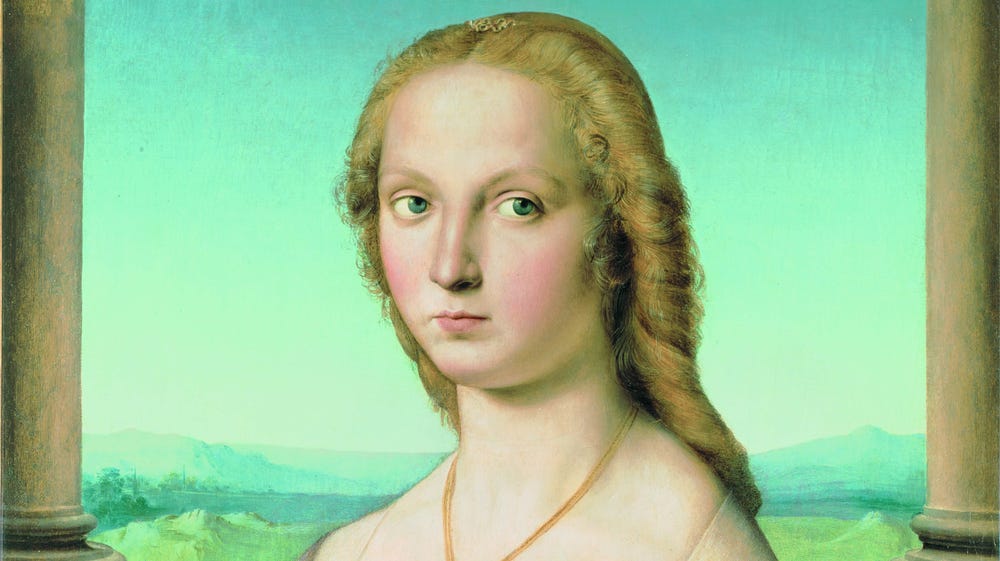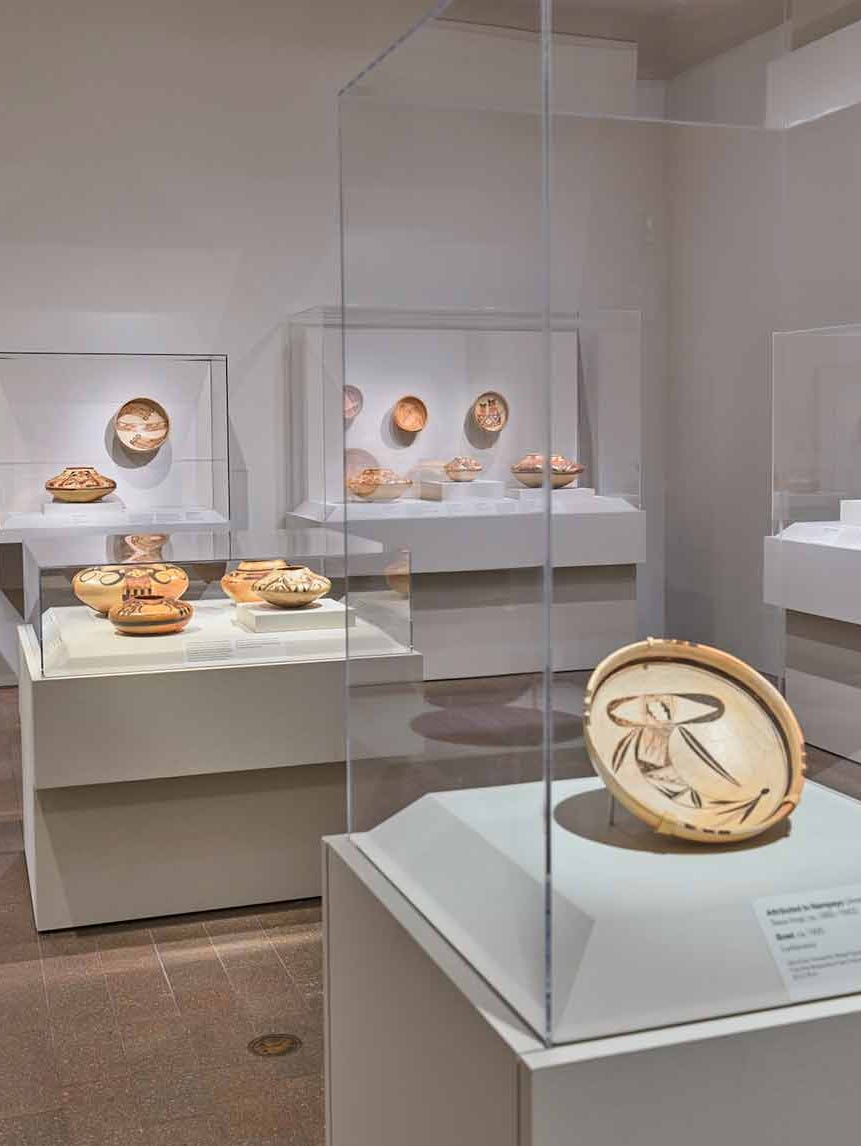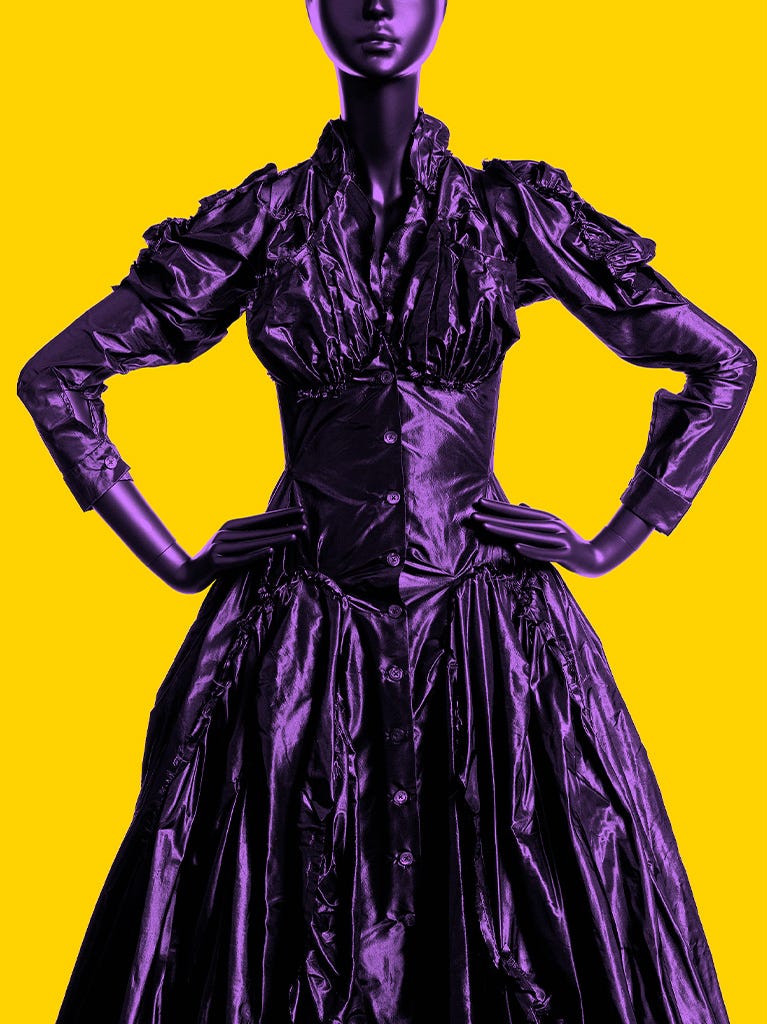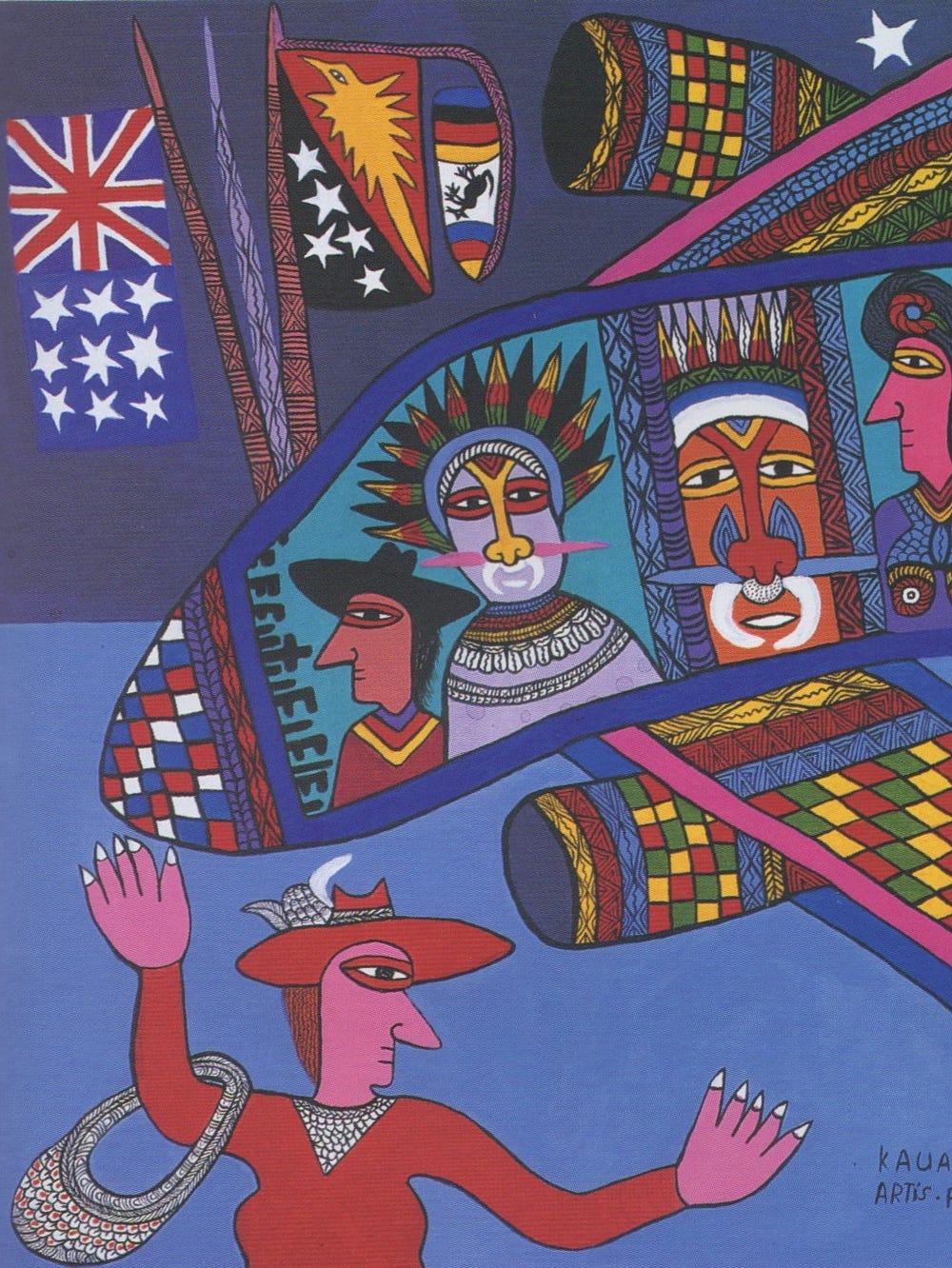Raphael, Portrait of a Lady with a Unicorn (detail), ca. 1505 – 1506. Oil on canvas, transferred from panel, 26 5/8 x 20 15/16 in (67.7 x 53.2 cm). Galleria Borghese, Rome, inv 371
Sublime Beauty: Raphael’s Portrait of a Lady with a Unicorn
Jump to
This focused exhibition features one of Raphael’s most beguiling and enigmatic paintings. The masterpiece, presented in the United States for the first time, is lent by the Galleria Borghese in Rome, where it was first recorded in the collection in 1682.
Portrait of a Lady with a Unicorn (ca. 1505 – 1506) features an unidentified blond-haired sitter and epitomizes the beauty of Raphael’s female portraits during his Florentine period. The exhibition explores the possible identity of this subject, as well as the painting’s distinct iconography, including the unicorn she holds in her lap. Scholars believe that the painting was commissioned to celebrate a wedding, and the unicorn, a conventional symbol of chastity, may offer clues to her familial lineage.
The exhibition further highlights the stylistic relationships between this masterpiece and Leonardo da Vinci’s Mona Lisa. Leonardo’s canonical work, painted in Florence in the early years of the 16th century, had a great impact on the younger Raphael, who also practiced in the city during this period. Raphael’s sophisticated adaptation of Leonardo’s innovations in portrait compositions resulted in Portrait of a Lady with a Unicorn, a painting that hints at the Mona Lisa with its half-length format, its sitter with hands folded in her lap, and its setting before a distant landscape. Visitors are able to explore Raphael’s painting in detail and get a glimpse into its intriguing history.
About the artist
Painter, draftsman and architect Raphael (1483 – 1520) was one of the most famous artists working in Italy during the period from 1500 to 1520, often identified as the High Renaissance. His paintings are noteworthy for their great beauty and harmony, epitomizing the Renaissance virtues of balance and ideal form. His later production exhibits an interest in expressing movement and emotion through narratives. He is best known for religious subjects, portraits, and historical scenes.
Sponsors
This exhibition is organized by the Fine Arts Museums of San Francisco and the Cincinnati Art Museum in collaboration with the Foundation for Italian Art and Culture and the Galleria Borghese. The Legion of Honor presentation is made possible by a lead sponsorship from the Frances K. and Charles D. Field Foundation, in memory of Mr. and Mrs. Charles D. Field, with additional major funding from The Christian Humann Foundation.



